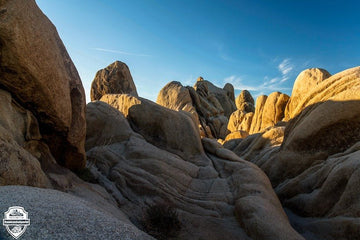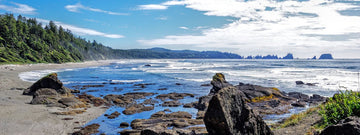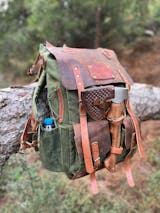Natural Resources While Camping
Camping is a fantastic way to connect with nature, unwind, and enjoy the great outdoors. For beginners, understanding how to use the natural resources around you can enhance your camping experience and ensure you’re well-prepared. Here’s a guide on how to make the most of your surroundings, with a special focus on what to pack in your camping backpack.
Packing Your Camping Backpack
Before diving into the natural resources, let’s talk about your camping backpack. A well-packed camping backpack is crucial for a successful trip. Here are some essentials to include:
- Shelter: A lightweight tent or a tarp for quick shelter setup.
- Sleeping Gear: A sleeping bag suitable for the weather conditions and a sleeping pad for comfort.
- Cooking Supplies: A portable stove, lightweight cookware, and utensils.
- Food and Water: Non-perishable food items and a water filtration system or purification tablets.
- Clothing: Weather-appropriate clothing, including layers, a rain jacket, and sturdy hiking boots.
- First Aid Kit: Basic medical supplies for emergencies.
- Navigation Tools: A map, compass, or GPS device.
- Lighting: A headlamp or flashlight with extra batteries.
- Fire Starting Tools: Matches, a lighter, or a fire starter kit.
Utilizing Natural Resources
Once you’ve packed your camping backpack, it’s time to make the most of the natural resources around you. Here are some key areas to focus on:
- Finding Water
Water is essential for survival. While you should always carry some with you, knowing how to find and purify water in the wild is crucial.
- Natural Sources: Look for streams, rivers, and lakes. Avoid stagnant water, which can be contaminated.
- Purification: Use a portable water filter, purification tablets, or boil the water to make it safe for drinking.
- Building a Shelter
If you find yourself without a tent or need additional shelter, natural materials can be very useful.
- Location: Choose a flat, dry area away from potential hazards like falling branches or flooding.
- Materials: Use branches, leaves, and other natural materials to create a lean-to or debris hut. A tarp can also be used in combination with natural materials for added protection.
- Starting a Fire
Fire provides warmth, a way to cook food, and a means to signal for help.
- Gathering Materials: Collect dry tinder (like leaves, grass, or bark), kindling (small sticks), and larger fuel wood.
- Fire Starting Methods: Use matches, a lighter, or a fire starter from your camping backpack. If you’re without these tools, you can use natural methods like a bow drill or flint and steel.
- Foraging for Food
While you should bring enough food in your camping backpack, knowing how to forage can supplement your supplies.
- Edible Plants: Learn to identify edible plants, berries, and nuts in your area. Always be sure of what you’re eating to avoid poisonous plants.
- Fishing: If you’re near a water source, fishing can provide a fresh meal. Pack a small fishing kit in your camping backpack or improvise with natural materials.
- Navigating the Wilderness
Understanding how to navigate using natural resources can prevent you from getting lost.
- Sun and Stars: Use the position of the sun during the day and the stars at night to find your direction.
- Landmarks: Identify and remember natural landmarks like mountains, rivers, and unique trees to help orient yourself.









